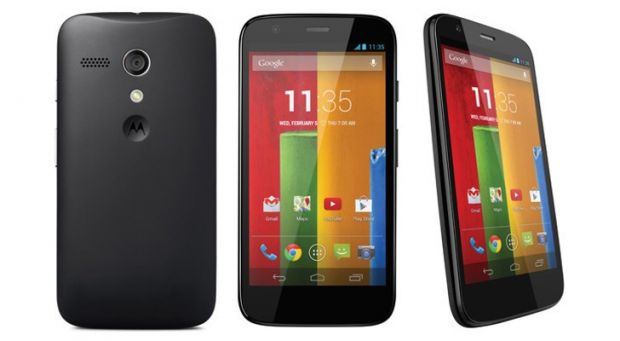Do you own the original Moto G model, or better, the LTE version that comes with microSD card slot as well? Do you consider upgrading to the new Moto G that has just been unveiled today, but you’re not sure if it’s worth the investment?
Read further to get all the details that will help you decide whether the Moto G (2014) is a worthy upgrade over the previous model that proved extremely popular in emerging markets like India.
Let’s start with the major difference that we can notice at first glance. Well, the original Moto G sports a 4.5-inch HD (720p) display, while the new Moto G (2014) comes with a much larger 5-inch HD screen.
Both displays feature Corning Gorilla Glass 3 coating, but the original Moto G has 325ppi (pixel per inch), whereas the Moto G (2014) only 295ppi.
Another major difference between the two Moto G models would be the microSD card slot, which is very important considering that the smartphones come with either 8GB or 16GB of storage.
As you probably know if you already own the original Moto G, this particular smartphone lacks microSD card slot, but the new model allows users to expand the internal memory up to 32GB.
For those who like taking pictures while on the go, the original Moto G offers a decent 5-megapixel camera with LED flash, autofocus and HD (720p) video recording.
The new Moto G, on the other hand, brings even better features for photographers. The Moto G (2014) packs an enhanced 8-megapixel rear camera with LED flash, autofocus and HD (720p) video recording.
It’s kind of disappointing that you still can’t capture full HD (1080p) video, but the improvement is more than welcome, and hopefully not just in the amount of megapixels. The same goes for the front camera, which has been bumped from 1.3 megapixels to 2 megapixels.When it comes to hardware, nothing has changed. Both Moto G versions are equipped with 1.2GHz quad-core Qualcomm Snapdragon 400 processors, Adreno 305 graphic processing units and 1GB of RAM.
The 2070 mAh battery is also present in both models, but the 16GB Moto G (2014) comes with built-in digital tuner and an app that allows users to watch their favorite TV programs while on the move.
Music lovers may also want to consider an upgrade, as the Moto G (2014) comes with stereo front speakers, while the previous version only had a mono speaker.
Last but not least, Motorola has confirmed that the Moto G (2014) comes with the Android 4.4.4 KitKat operating system out of the box, but it will receive an upgrade to Android L as soon as the new OS is released.
The previous model has yet to be confirmed for an Android L upgrade, but considering the smartphone was launched on the market back in November, it should get it as well. Price-wise, both Moto G and Moto G (2014) have been priced similarly ($179 / €138), but the latter has better features now.
So there you have it, do you think it’s worth upgrading from the original Moto G to the new model? Or do you think Motorola should have packed better features inside the Moto G (2014) to make the upgrade worthwhile?

 14 DAY TRIAL //
14 DAY TRIAL // 

